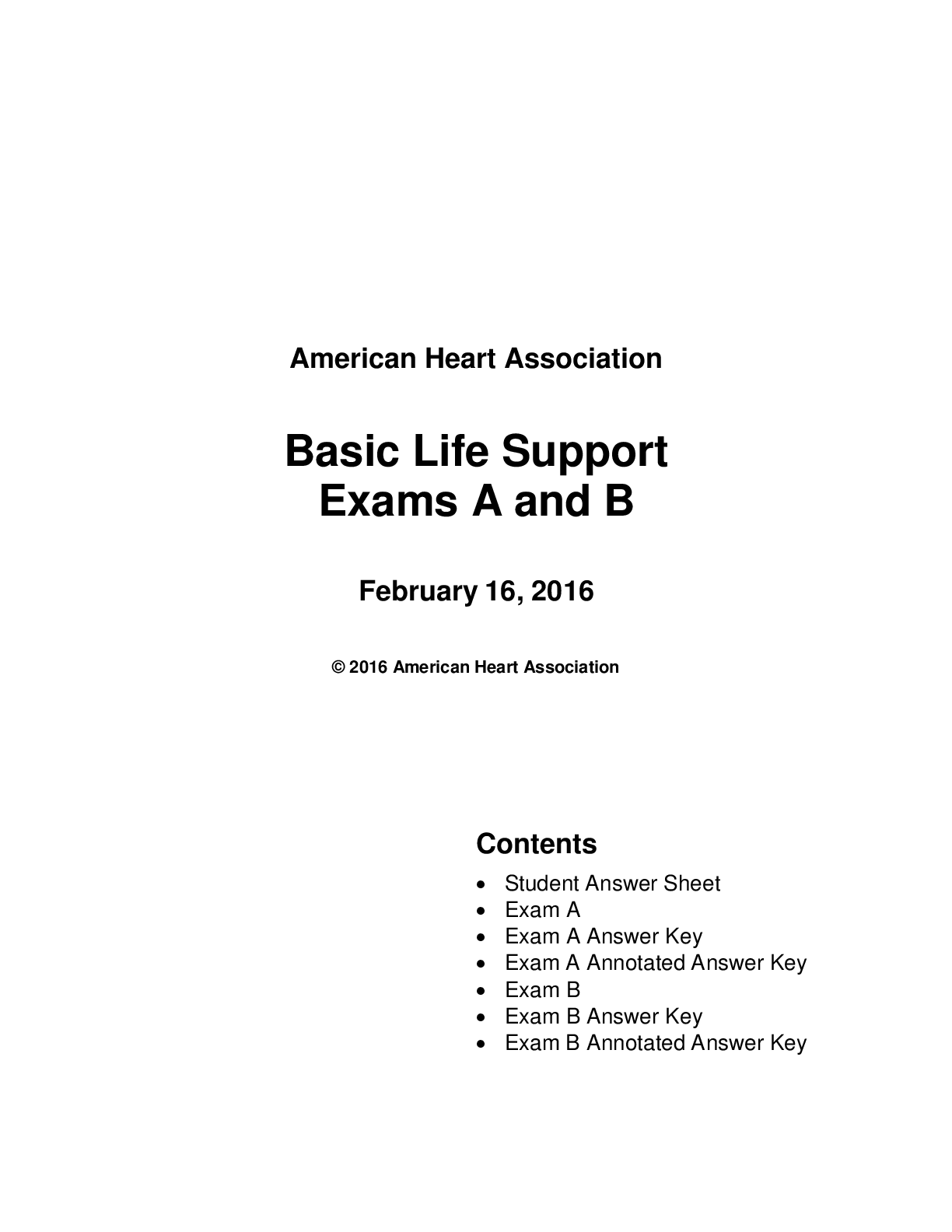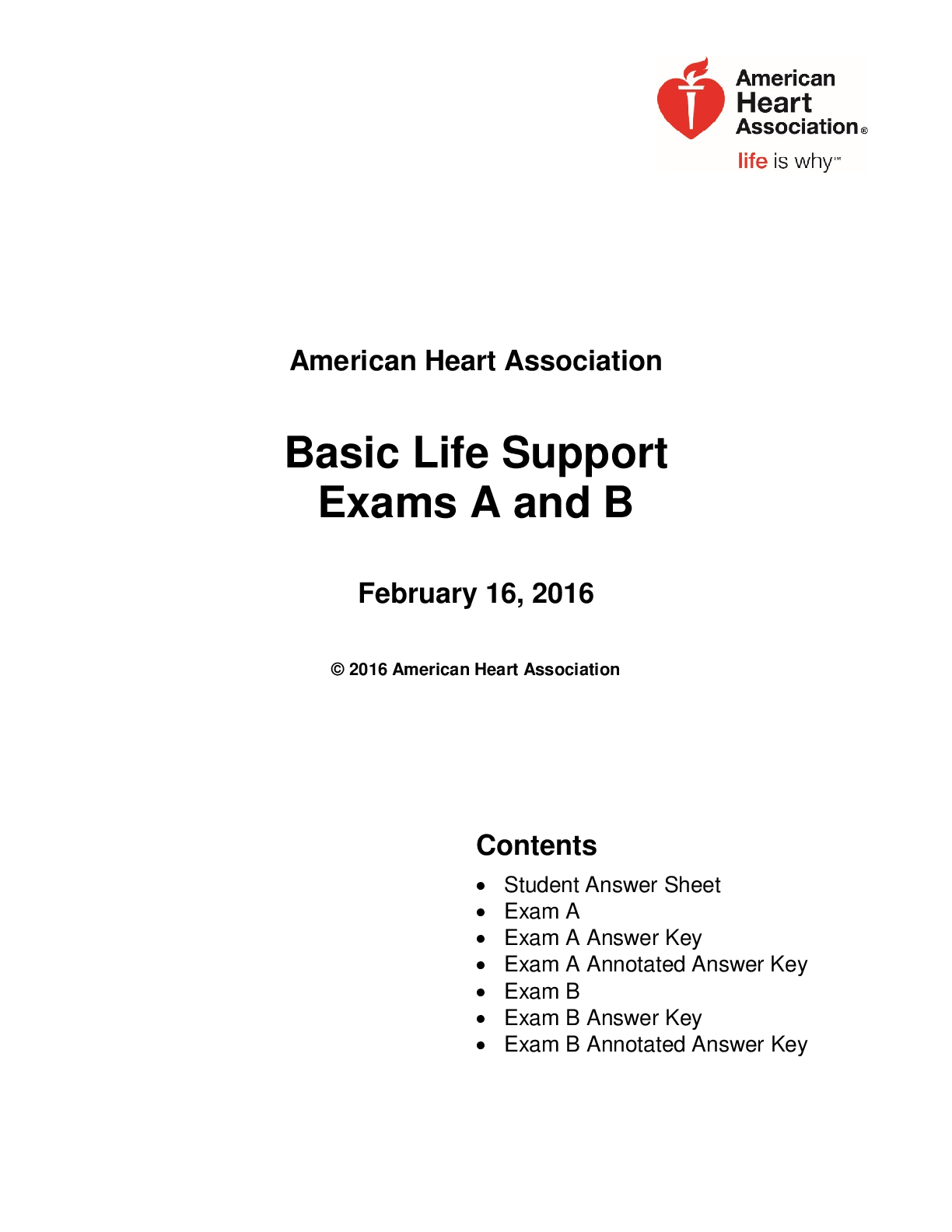American Heart Association Basic Life Support Exam A February 16, 2016
Course
Subject
Chemistry
Category
Questions Only
Pages
32
Uploaded By
ATIPROS
Preview 5 out of 32 Pages


Download all 32 pages for $ 9.00
Reviews (0)
$9.00
